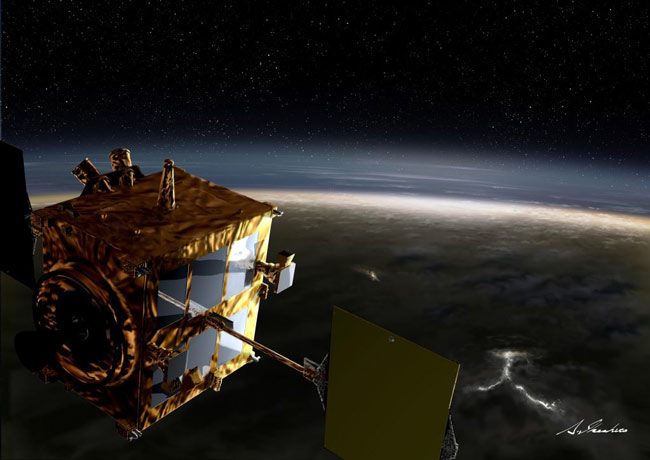
This story was updated at 4:52 a.m. ET.
A Japanese Venus probe failed in its mission to enter into orbit around the hellishly hot planet Monday (Dec. 6). The spacecraft may be able to try again in seven years, or it may be gone for good, according to news reports.
After more than six months of interplanetary travel, the $300 million Akatsuki spacecraft, whose name means "Dawn" in Japanese, fired its engines in an orbital-insertion burn around 6:49 p.m EST (2349 GMT) Monday, Japan Aerospace Exploration Agency (JAXA) officials said.
After the engine firing, a communications blackout — caused when Akatsuki swung behind Venus — grew from the expected 22 minutes to more than 1 1/2 hours, suggesting that something had gone awry.
"We have found that the orbiter was not injected into the planned orbit as a result of orbit estimation," JAXA officials said in a statement released early Wednesday (Dec. 8).
JAXA scientists managed to re-establish communication with the spacecraft, the newspaper Japan Today reported. But during a press conference Tuesday (Dec. 7), JAXA officials said Akatsuki sped past Venus, failing to insert into orbit, according to Japan Today.
"I'm sorry that we failed to meet the expectations of the public," Japan Today quoted Masato Nakamura, Akatsuki project manager, as saying during the press conference.
Get the Space.com Newsletter
Breaking space news, the latest updates on rocket launches, skywatching events and more!
JAXA officials are considering whether to try to insert Akatsuki again in seven years, when the probe will come close enough to Venus once more, according to the news service Agence-France Presse. The craft doesn't have enough fuel to hit the brakes and turn around.
"JAXA has set up an investigation team led by ISAS Director within JAXA to study the cause of the failure," JAXA officials said, referring to Japan's Instite for Space and Astronautical Science. "We will update you with the countermeasures and investigation results."
Akatsuki was supposed to spend at least the next two years orbiting Venus, studying its clouds, atmosphere and weather in unprecedented detail.
One main goal was to determine how Venus — similar in so many ways to Earth — veered off on such an extreme path, becoming an inhospitable world with thick sulfuric-acid clouds and surface temperatures hot enough to melt lead, JAXA officials have said. [Gallery: Beneath the Clouds of Venus]
Akatsuki launched from Tanegashima Space Center in Japan on May 20 along with the solar-sail spacecraft Ikaros. Ikaros became the first craft to cruise through space propelled only by sunlight, and it's still going strong.
The spacecraft was the second robotic Japanese probe ever sent to visit another planet. Japan's first planetary mission, the Nozomi orbiter sent to Mars, also failed to enter orbit in late 2003.
You can follow SPACE.com senior writer Mike Wall on Twitter: @michaeldwall.
Join our Space Forums to keep talking space on the latest missions, night sky and more! And if you have a news tip, correction or comment, let us know at: community@space.com.

Michael Wall is a Senior Space Writer with Space.com and joined the team in 2010. He primarily covers exoplanets, spaceflight and military space, but has been known to dabble in the space art beat. His book about the search for alien life, "Out There," was published on Nov. 13, 2018. Before becoming a science writer, Michael worked as a herpetologist and wildlife biologist. He has a Ph.D. in evolutionary biology from the University of Sydney, Australia, a bachelor's degree from the University of Arizona, and a graduate certificate in science writing from the University of California, Santa Cruz. To find out what his latest project is, you can follow Michael on Twitter.









